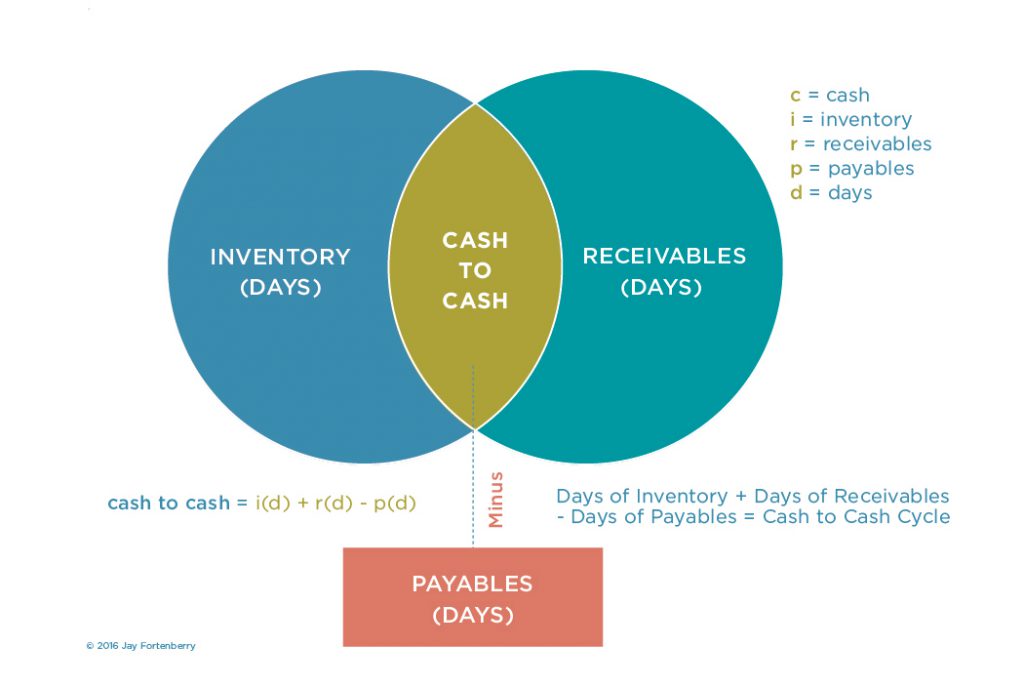“According to Warren Buffett, “Cash…is to a business as oxygen is to an individual. Never thought about when it is present, the only thing in mind when it is absent.”
The old adage that “cash is king” is truer than ever. But handling cash effectively — with foresight, insight and top-down management awareness of the stakes involved — can mean the difference between merely surviving and long-term, profitable viability. Unfortunately, many companies don’t know how to leverage and optimize their cash, working capital, free cash flow and the cash to cash cycle, or how those financial management tools are interconnected. Understanding and optimizing the cash to cash cycle is paramount, yet only one in three companies consider it important.
This is a costly mistake that can be fixed.
Some companies — including Honeywell and Toyota — have a real knowledge of the internal processes and importance of cash to cash and working capital management, but based on our combined years of experience, they are the minority. Dave Cote, Honeywell CEO, says that among those that do realize its importance, far too many top level executives “don’t really understand how to go after it.”
Cote’s point is underscored by J. Paul Dittmann, Ph.D. of The University of Tennessee’s Executive Director Global Supply Chain Institute:
“When the CFO at Whirlpool asked us if we could somehow use our supply chain to cut working capital in a major way, I was clueless. In fact, I’m embarrassed to say I couldn’t even define working capital. I was stunned when I discovered the huge impact working capital has on the firm’s overall financial health, cash flow, and ultimately shareholder value. And I was surprised and gratified when three years later we had taken $600 million out of working capital using supply chain projects.”
So what exactly is the cash to cash cycle?
The cash to cash cycle is defined as the period of time between when a company spends a dollar on purchases from a supplier until it becomes a dollar of revenue from the customer. The shorter that timeframe, the better. By reducing its cash to cash cycle, a company firms up its balance sheet, improves its cash flow, and cuts its working capital requirements.

The graphs below show how Honeywell and Toyota benefitted from optimizing the cash to cash cycle. Each aggressively managed their ten-year free cash flow performance as a result of reducing their cash to cash cycle. In both cases we see that this process yielded benefits to both the shareholders and to the business, as cash generated could be used for:
- Increasing growth opportunities
- Expansions into adjacent and other industries
- Mergers & Acquisitions (M&A)
- Research and Development (R&D)
- Retiring debt
- Shareholder dividends


 When it comes to the cash to cash cycle, everyone needs to be involved, from the CEO to the CFO, from the supply chain leader to the purchasing and logistics professional. The figure above shows that cash to cash is at the center of six vital areas of business, including Leadership, Business Strategy, and Operational Excellence.
When it comes to the cash to cash cycle, everyone needs to be involved, from the CEO to the CFO, from the supply chain leader to the purchasing and logistics professional. The figure above shows that cash to cash is at the center of six vital areas of business, including Leadership, Business Strategy, and Operational Excellence.
The Fortenberry Cash to Cash Method consists of three main elements:
- Running the Business
- Optimizing the Supply Chain
- Building a Productivity Machine
These elements, and how they relate to working capital and cash to cash cycle times, are thoroughly explored in detail in the full white paper linked below.
